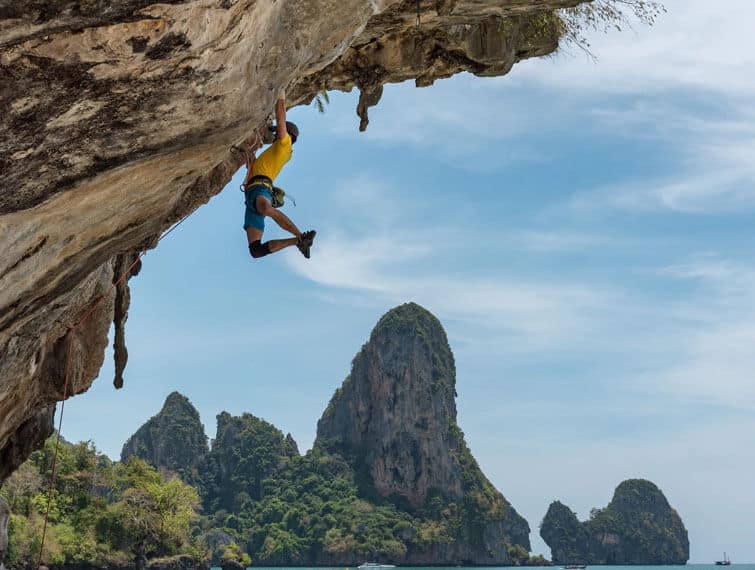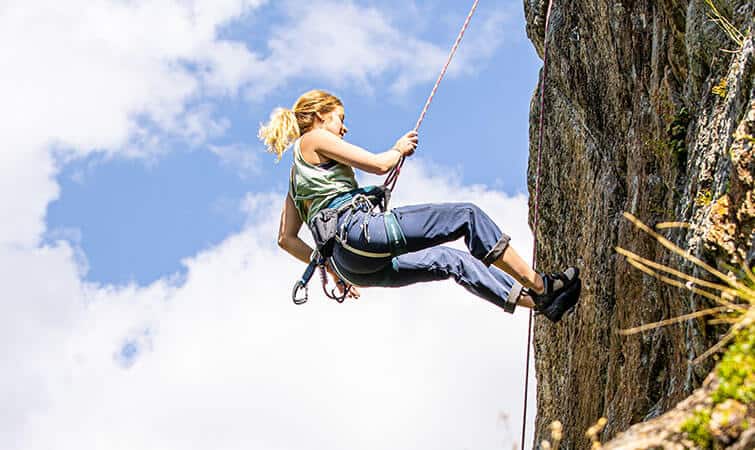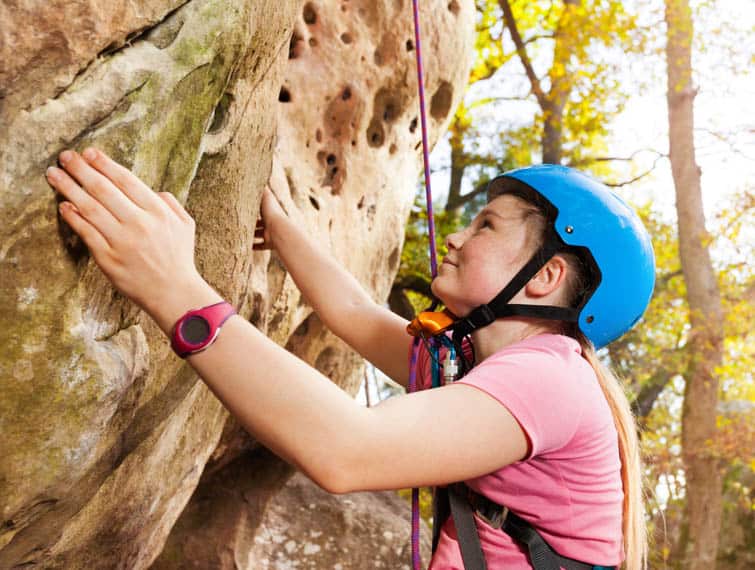There are at least three areas looked into when pertaining to the history of rock climbing. They include the Dolomites in Italy, the north of England – Lake District and Peak District, and Elbe Sandstone Mountains in Saxony. The activity evolved through time. From being a necessity in the alpines, it was later on developed as a sport.

Here’s a look at how the sport started, where it began, and what led to the developments it is currently enjoying.
The Origins Rock Climbing
Who invented rock climbing? Walter Parry Haskett Smith, who made the first climb in the 70-foot Napes Needle in England, was often referred to as the father of rock climbing in the British Isles. He accomplished the act in a free solo style in the late 1880s. It gained a lot of attention and drew more people to participate in the sport.
Fun Outdoor Quiz
Rock Climbing History Timeline
What happened before Haskett Smith’s ascent, and what went with regards to the history of rock climbing after that? Climbing devices, such as chalk and shoes, weren’t used in the sport until the middle part of the 1900s. This will give you an idea about how challenging it might have been for early climbers to complete their routes.
Years before Haskett Smith’s feat, there were pieces of evidence leading to the conclusion that men were engaged in the activity years back.
- 400BC – A watercolor artwork was found in China depicting men climbing rocks
- 1100s – It was noted in rock climbing history that Native Americans from Southwest Anasazi ascended the Chicago Canyon cliffs.
- 1492 – Antoine de Ville, a servant of Charles VIII, used ropes and ladders to climb Mont Aiguille. The method he used became an inspiration in the field in later years.
- 1695 – Martin of Scotland used ropes in climbing St. Kilda.
- August 8, 1786 – The highest mountain in the Alps, Mont Blanc, was climbed by Frenchmen, Jacques Balmat, and Michael Gabriel Piccard. This vital moment in climbing history set a precedent for the future of rock climbing.

Essential Happenings in the History of Climbing in the 1800s
- 1869 – John Muir climbed the Cathedral Peak in Tuolumne Meadows on his hiking boots and using the free solo method.
- 1875 – George Anderson climbed barefoot the Half Dome in Yosemite National Park. For protection, he drilled iron spikes into the rocks along the route.
- 1886 – Rock climbing was finally recognized as a sport after the feat of Walter Parry Haskett Smith.
- 1887 – The Dolomites became a rock climbing zone flocked by people from around the globe. It happened after Georg Winkler, who was 17 years old at the time, climbed the Die Vajolettürme on the Dolomite Mountains, Italy, using the free solo method.
- 1892 – Oscar Eckenstein, a British climber, put up a competition of bouldering in the Karakoram Mountains at the borders of China, India, and Pakistan. The competition involved cash prizes.
- 1893 – Willard Ripley and William Rogers climbed the Devils Tower summit by connecting a wooden spike to a crack in the wall and linked their rope to it to help them ascend.
During the 1900s
- 1903 – About 500 people climbed the Elbe Sandstone Mountains, which led to the organization of climbing clubs. The two World Wars that happened the following years affected the sport’s popularity.
- 1906 – Rudolf Fehrmann, W. Huenig, and Oliver Perry-Smith ascended the Elbe Sandstone Mountains in what was referred to as Teufelsturm. It was considered a more challenging climb with a 5.10 difficulty rating.
- 1910 – Otto Herzog designed the first steel carabiner. Hans Fiechtl changed the piton’s design by putting an eye in the piton’s body as a replacement for the attached ring.
- 1910 to 1914 – Hans Dülfer, a German climber, created the dülfersitz rappelling technique. He also suggested the use of equipment to climb difficult routes.
- 1914 – Paul Preuss created the term, artificial aid. It was used to describe the utilization of mechanical aid to help a climber ascend. Siegfried Herford and his group climbed the Flake Pitch, the hardest climb recorded in England at the time. It had a difficulty rating of 5.9.
- 1918 – Emanuel Strubich completed the hardest climb at the time on The Wilder Kopf, Elbe Sandstone Mountains. It was referred to as Westkante, with a difficulty rating of 5.10 c.
Recent Years
A lot more has happened through the years that defined the sport and paved the way for the development of devices and tools to aid the climbers.
- 2000 – Neil Bentley finished the Equilibrium climb in Derbyshire. It had a difficulty rating of 5.14a/b.
- 2008 – Chris Sharma conquered Jumbo Love on Clark Mountain in California. It had a difficulty rating of 5.15b.
- June 5 to 6, 2012 – Alex Honnold climbed the Yosemite Triple Crown in the first rope solo done in climbing history. The climb lasted for 18 hours and 50 minutes. It was also in 2012 when Adam Ondra ascended Change in Norway. It had a difficulty rating of 9b+.
- January 15, 2014 – Alex Honnold was the first to climb the El Sendero Luminoso in Mexico using the free solo method.
- 2015 – Kevin Jorgeson and Tommy Caldwell were the first to free climb the Dawn Wall in Yosemite Valley. It had a difficulty rating of 5.15a.
- February 26, 2017 – Margo Hayes became the first woman that succeeding in red-pointing a climb with a difficulty rating of 5.15a in La Rambla.
- June 3, 2017 – Alex Honnold got a record of 3 hours and 56 minutes in climbing El Capitan using the free solo method. He was acknowledged as the first person to achieve the feat.
- September 3, 2017 – Adam Ondra became the first person to finish a climb with a difficulty rating of 5.15d in Silence in Norway.
The history of rock climbing depicts the challenges faced by climbing enthusiasts before all the developments and improvements. The sport faces a bright future with the continuous studies and research being done to aid climbers in finishing even the more difficult routes.
If you are interested in the sport, it will help you understand its complexities and develop your rock climbing basics and techniques by learning how the first climbers in history accomplished their feats.









